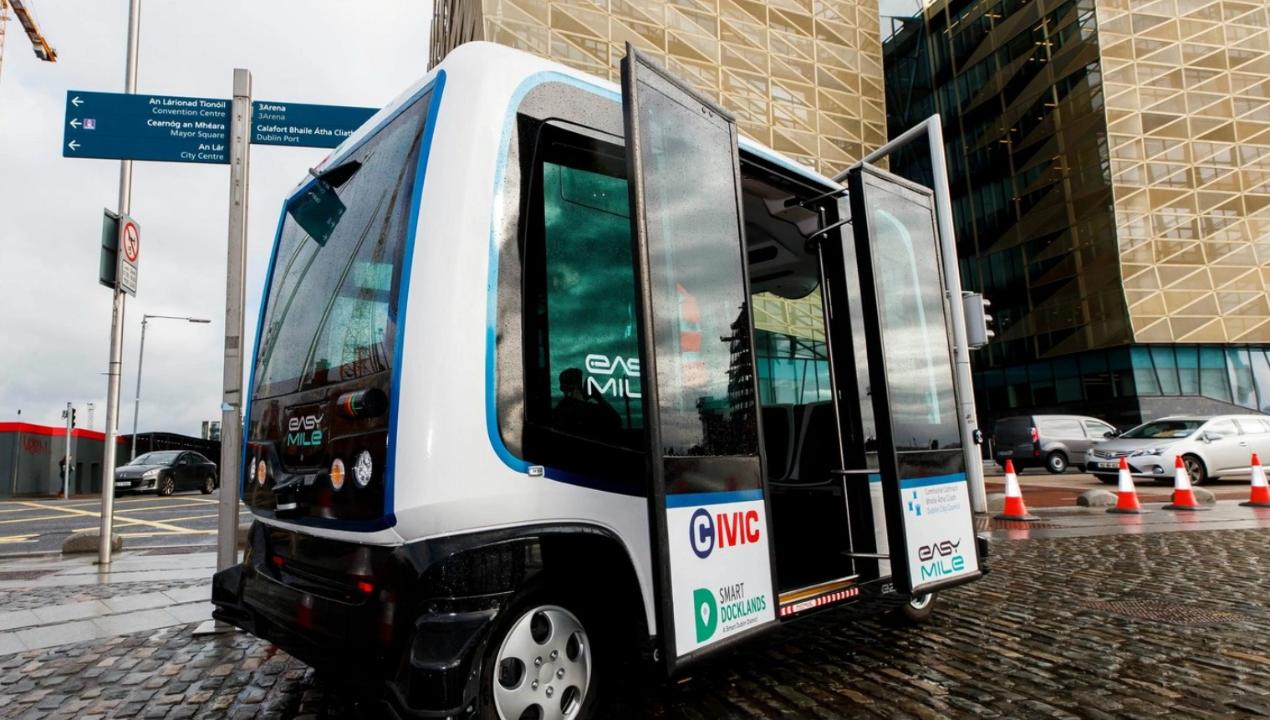
Ireland’sfirst driverless vehicle made its debut appearance on the streets of Dublin last weekend 21st-23rd September, on a 1km route from the Convention Centre Dublin to the 3 Arena.
The EZ10 has a maximum capacity of 15 passengers and the autonomous vehicle was showcased as part of the Future of Mobility event organised by Dublin City Council as part of European Mobility Week.
Dublin City Council chief executive Owen Keegan said that such driverless vehicles would “make a major contribution in terms of sustainable transport” in Ireland and were “inevitable”.
Using its specially designed cameras, sensors and processors, the EZ10 can complete short trips on existing roads with no additional infrastructure required. An in-built ramp also makes the vehicle accessible for mobility challenged passengers.
Keegan envisaged that the vehicles would bring people from bus and train stations to their eventual destination with a vision of reducing the amount of single-occupancy vehicles on the road.
Made by French company EasyMile EZ10 uses GPS and artificial intelligence (AI) to guide itself and can recognise road signs and brakes automatically when facing a collision.
The fully electric shuttle is already in use in several cities across Europe. In Stockholm, the vehicle mixes with regular traffic in the suburb of Barkarby along predefined routes.
“The idea is now that we are here, we really want to provide a service for Dublin,” said Clement Delbouys, an EasyMile spokesman. “It could be at the university, the port or the airport. We want to showcase what we can do on the streets of Dublin.”
There have been concerns about autonomous transport in other cities across the world after the death of a woman in Tempe, Arizona. The woman was struck by an autonomous Uber vehicle while testing its self-driving mode in March.
With 90% of crashes in the US caused by driver error, eliminating the driver, in theory, would substantially cut the amount of collisions.
John M Simpson, privacy and technology project director with Consumer Watchdog said “The technology is not ready for it yet, and his sadly proves it”.
Michael Walsh
Image Credit: The Irish Times
